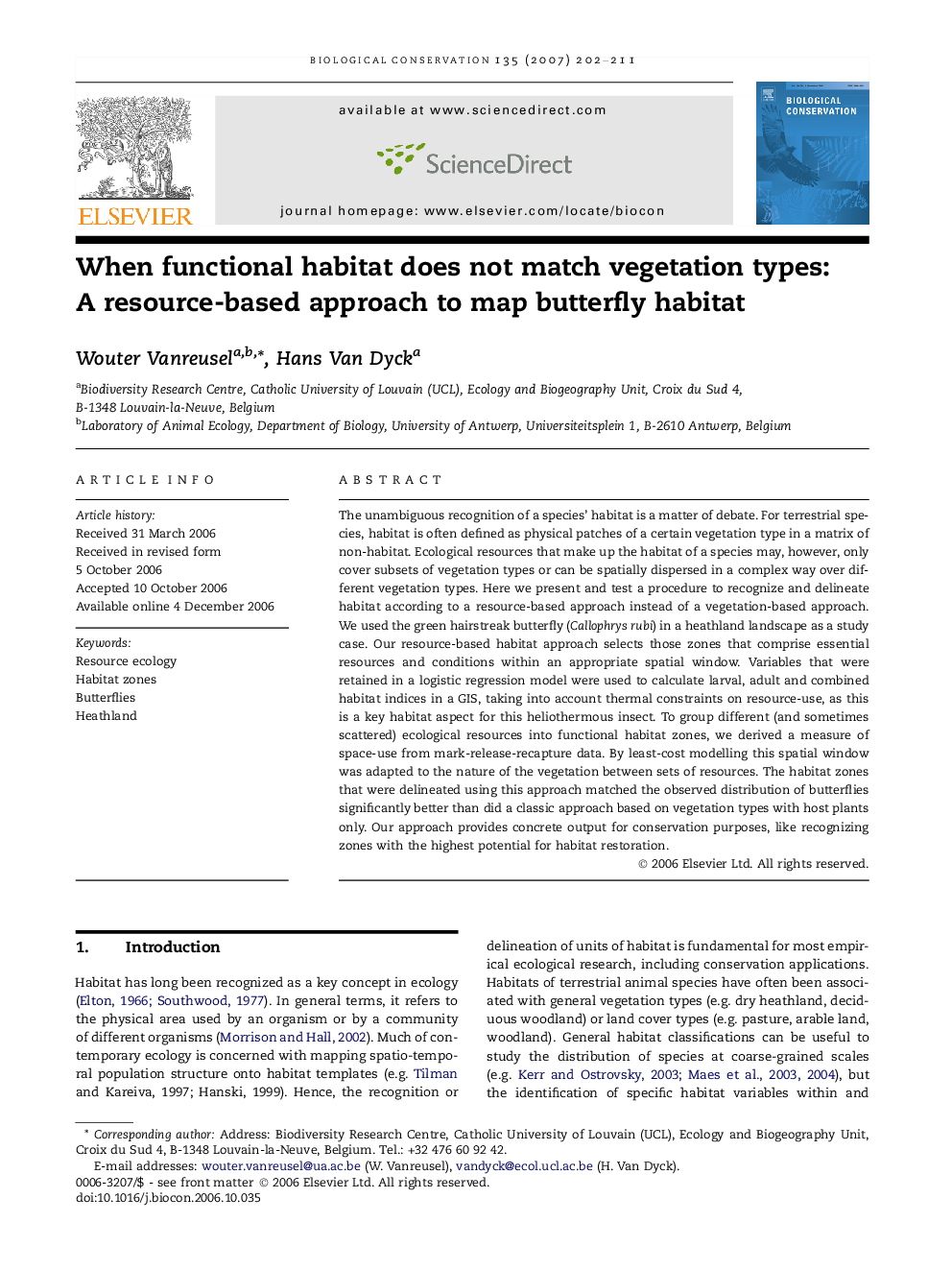| کد مقاله | کد نشریه | سال انتشار | مقاله انگلیسی | نسخه تمام متن |
|---|---|---|---|---|
| 4387296 | 1304598 | 2007 | 10 صفحه PDF | دانلود رایگان |

The unambiguous recognition of a species’ habitat is a matter of debate. For terrestrial species, habitat is often defined as physical patches of a certain vegetation type in a matrix of non-habitat. Ecological resources that make up the habitat of a species may, however, only cover subsets of vegetation types or can be spatially dispersed in a complex way over different vegetation types. Here we present and test a procedure to recognize and delineate habitat according to a resource-based approach instead of a vegetation-based approach. We used the green hairstreak butterfly (Callophrys rubi) in a heathland landscape as a study case. Our resource-based habitat approach selects those zones that comprise essential resources and conditions within an appropriate spatial window. Variables that were retained in a logistic regression model were used to calculate larval, adult and combined habitat indices in a GIS, taking into account thermal constraints on resource-use, as this is a key habitat aspect for this heliothermous insect. To group different (and sometimes scattered) ecological resources into functional habitat zones, we derived a measure of space-use from mark-release-recapture data. By least-cost modelling this spatial window was adapted to the nature of the vegetation between sets of resources. The habitat zones that were delineated using this approach matched the observed distribution of butterflies significantly better than did a classic approach based on vegetation types with host plants only. Our approach provides concrete output for conservation purposes, like recognizing zones with the highest potential for habitat restoration.
Journal: Biological Conservation - Volume 135, Issue 2, March 2007, Pages 202–211